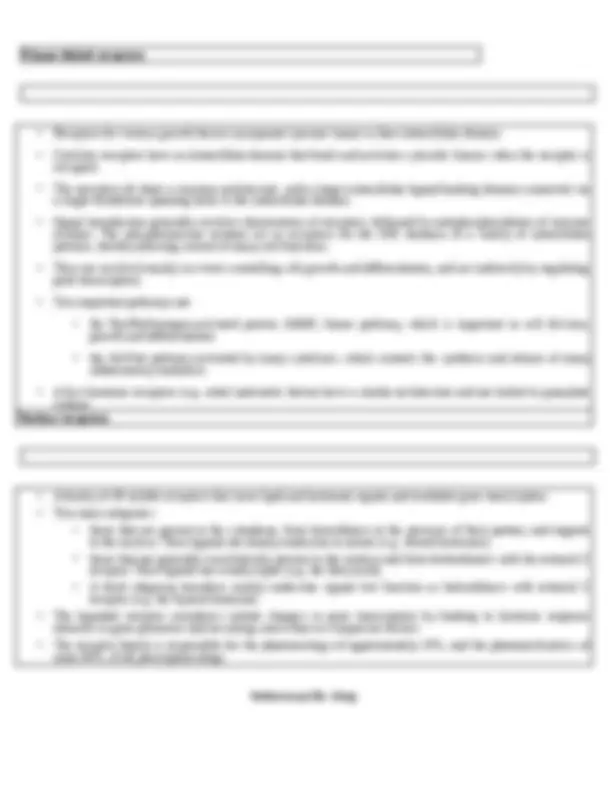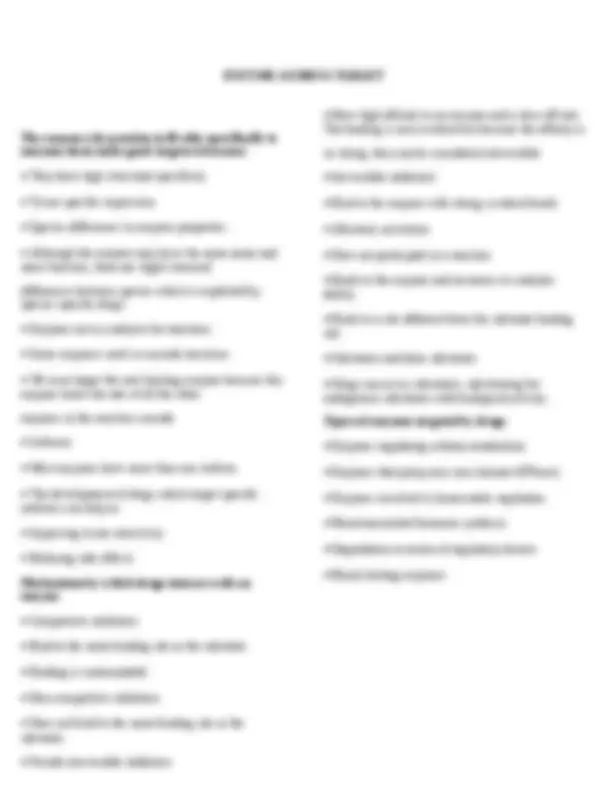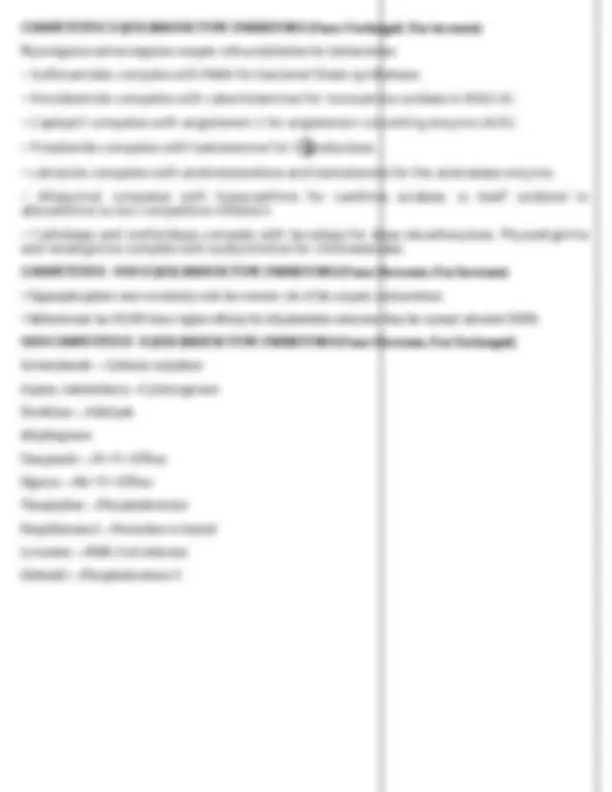





Study with the several resources on Docsity

Earn points by helping other students or get them with a premium plan


Prepare for your exams
Study with the several resources on Docsity

Earn points to download
Earn points by helping other students or get them with a premium plan
Community
Ask the community for help and clear up your study doubts
Discover the best universities in your country according to Docsity users
Free resources
Download our free guides on studying techniques, anxiety management strategies, and thesis advice from Docsity tutors
Receptor general pharmacology rang & dale
Typology: Exams
1 / 5

This page cannot be seen from the preview
Don't miss anything!




Receptor classification
GPCR mechanism Steps
GPCR messengers
IP3/DAG Pathway
Examples of GPCR Pathways
Cellular effect Response via GPCR
Adenylyl cyclase:
cAMP pathway
increases
Increased contractility/impulse generation (heart), relaxation (smooth muscle), glycogenolysis, lipolysis, inhibition of secretion/mediator release, modulation of junctional transmission, hormone synthesis, etc. cAMP directly opens a specific type of membrane Ca2+ channel called cyclic nucleotide gated channel (CNG) in the heart, brain and kidney.
Phospholipase C: IP3-
DAGpathway
mediates/modulates contraction, secretion/ transmitter release, eicosanoid synthesis, neuronal excitability, intracellular movements, membrane function, metabolism, cell proliferation, etc.
Channel regulations
(Ca2+, K+ or Na+)
Physiological responses like changes in inotropy, chronotropy, transmitter release, neuronal activity and smooth muscle relaxation follow. The Gs opens Ca2+ channels in myocardium and skeletal muscles,
while Gi and Go open K+ channels in heart and smooth muscle as well as close neuronal Ca2+ channels.
G- PROTEIN – The G-protein consists of three subunits (α, β, γ), which are anchored to the membrane through attached lipid residues. Coupling of the α subunit to an agonist-occupied receptor causes the bound GDP to exchange with intracellular GTP; the α-GTP complex then dissociates from the receptor and from the βγ complex, and interacts with a target protein (target 1, which may be an enzyme, such as adenylate cyclase, or an ion channel). The βγ complex may also activate a target protein (target 2). The GTPase activity of the α subunit is increased when the target protein is bound, leading to hydrolysis of the bound GTP to GDP, whereupon the α subunit reunites with βγ.
G-protein-coupled receptors
Receptor-linked G-proteins also control:
Enzyme receptors
The reasons why proteins (will refer specifically to enzymes here) make good targets is because:
same function, there are slight chemical
differences between species which is exploited by species specific drugs.
enzyme limits the rate of all the other
enzymes in the reaction cascade.
isoforms can help in:
Mechanisms by which drugs interact with an enzyme
substrate.
so strong, they can be considered irreversible.
Types of enzymes targeted by drugs
COMPETITIVE EQUILIBRIUM TYPE INHIBITORS (Vmax Unchanged, Km increases)
Physostigmine and neostigmine compete with acetylcholine for cholinesterase.
alloxanthine (a non competitive inhibitor).
and neostigmine compete with acetylcholine for cholinesterase.
COMPETITIVE NON EQUILIBRIUM TYPE INHIBITORS (Vmax Decreases, Km Increases)
NONCOMPETITIVE EQUILIBRIUM TYPE INHIBITORS (Vmax Decreases, Km Unchanged)
Acetazolamide —Carbonic anhydrase
Aspirin, indomethacin—Cyclooxygenase
Disulfiram —Aldehyde
dehydrogenase
Omeprazole —H+ K+ ATPase
Digoxin —Na+ K+ ATPase
Theophylline —Phosphodiesterase
Propylthiouracil —Peroxidase in thyroid
Lovastatin —HMG-CoA reductase
Sildenafil —Phosphodiesterase-